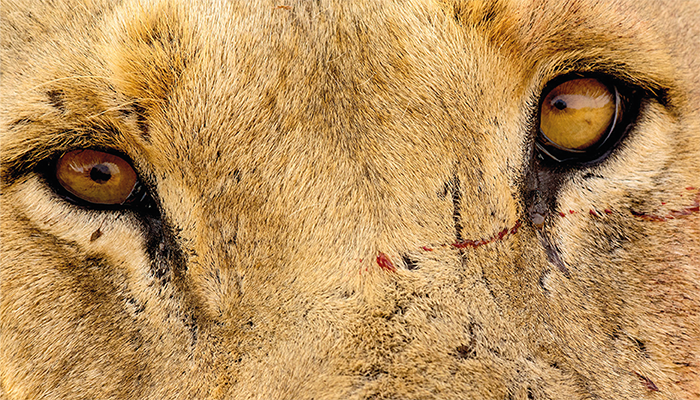
Credit: Michael Jeffords and Susan Post
Microscopic hair trapped in the broken teeth of two notorious Tsavo lions has provided a new look into their prey choices during their reign of terror over a century ago. Using a combination of metagenomics, DNA sequencing, and microscopy, researchers from the Institute for Genomic Biology, University of Illinois, USA, found that the lions consumed giraffe, oryx, zebra – and indeed humans.
In the late 1890s in Kenya, the two lions – large and maneless males – were responsible for at least 28 deaths, dragging victims from their tents at night. While the lions’ remains have been studied for years, this recent analysis offers the most concrete evidence yet of the species they preyed upon.
The researchers extracted compacted hair found in the lions’ dental cavities – one of the few remaining biological traces of their meals. They then used optical and electron microscopy to examine the structure of the hairs embedded in the teeth, determining that they came from multiple prey species.
The next step involved extracting DNA from these hair samples, which had been remarkably well-preserved in the dry conditions of Tsavo. Metagenomic techniques were applied to analyze the extracted DNA, sequencing the genetic material to match it against known mitochondrial DNA (mtDNA) sequences from a reference database. To separate environmental contaminants from genuine prey sequences, the researchers employed advanced bioinformatics tools to filter the DNA data.
The team’s metagenomic approach was crucial in identifying not just large prey like giraffes and zebras but also smaller species that had not been previously suspected.
The presence of wildebeest DNA was surprising, given that the nearest wildebeest population was located over 50 miles away at the time, indicating that the lions may have traveled far beyond their usual hunting grounds before returning to Tsavo. Meanwhile, the presence of human DNA confirmed historical reports.
More broadly, the study illustrates the utility of metagenomics in historical ecology; by applying modern molecular techniques to old biological samples, the researchers have provided a new approach to explore predator–prey dynamics, informing future studies on both extant and extinct species.




